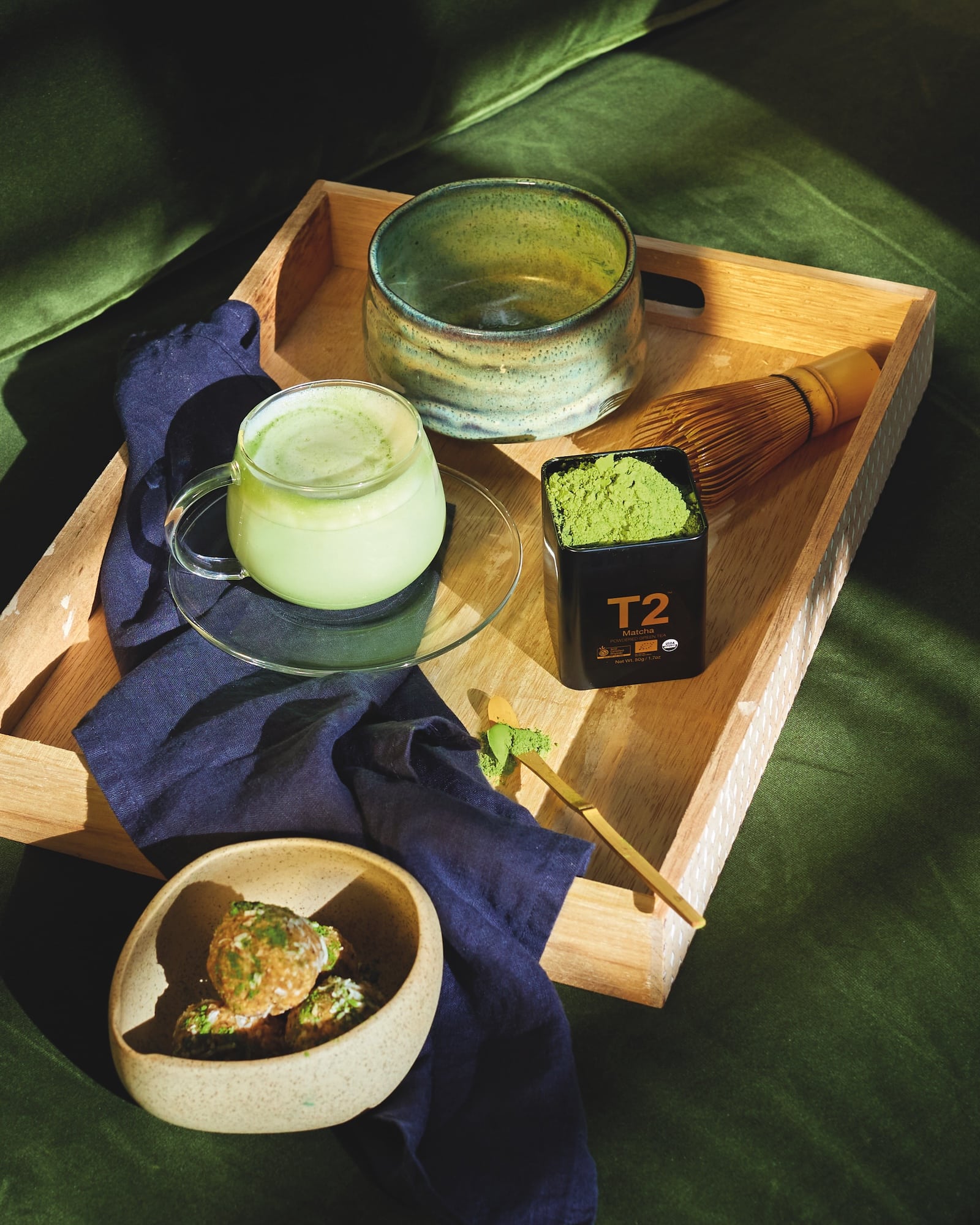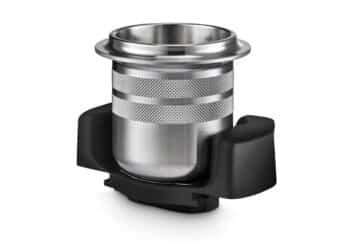Matcha is giving coffee a run for its money in the popularity stakes, but what actually is the vibrant green powder and how can you tell good quality from bad? T2 spills the tea.
Once a niche product mostly embraced by the wellness community and a small slice of Australia’s café sector that catered to the health-conscious market, matcha has now well and truly gone mainstream.
In 2024 the domestic matcha market was valued at $53.75 million, with that number predicted to rise to $82 million by 2030. Some inner-city cafés report matcha sales are outpacing coffee, while there’s a new wave of venues popping up solely focusing on beverages crafted with the green-tea powder – with coffee a supplementary addition to the menu.
According to the team at T2, this popularity explosion has been fuelled by two main factors: the increasing interest in wellness and the rise of social media.
“It’s funny, because at T2 we’ve been selling matcha since 1996. When I joined the company 10 years ago we thought it was a craze then, but it really has exploded over the past couple of years,” says Nyssa Ehsani, T2 Business Development Manager.
“A decade ago, it was getting attention from the wellness community and I think the wider adoption of health and mindfulness in Australia has contributed to its popularity. Not only is matcha rich in antioxidants but it also contains the amino acid L-theanine, which slows down the effects of caffeine. That’s why you can drink it in the afternoon and feel quite calm and balanced, instead of getting the jitters.”
As with many wellness trends that have gone mainstream, social media has been a launchpad for all things matcha.
“The vibrant green colour and creamy texture have been a hit among Instagram and TikTok users, and that’s had a huge impact on fuelling its status among younger consumers,” says Gianna Serbati, T2 Marketing Manager.
“Creators are showcasing matcha in all manner of formats – from lattes to desserts to baking – and that’s driving demand for creative drinks and treats in local cafés.”
Back to basics
While more people than ever might be choosing a matcha-based beverage, how many consumers actually know what they’re drinking? For those unsure of the specifics, Nyssa explains.
“All tea comes from the Camellia sinensis species, so the only difference between traditional green tea and matcha is that it is ground into a fine powder,” she says.
“Green tea for matcha is also shaded before the young leaves are picked, which increases the levels of chlorophyll and produces the bright green colour for which it is known. The best matcha, like ours, is carefully stone milled – a slow process in which the temperature of the tea is maintained to avoid eroding the quality of the leaves. Cheaper matcha is often ground using faster machinery that creates a far less refined product.”
Due to its historic links to Japan – although matcha was, in fact, first produced in China – some believe it’s only grown in the country, yet the tea leaves can be produced anywhere with a favourable climate.
“Unlike coffee, a market in which a lot of value is often paid to single-origin products, tea masters usually blend tea cultivars from a range of sources to get the desired consistency and flavour,” says Nyssa.
The quality question
So, how do you tell a great matcha from an average one? It’s all about taste.
“Your tastebuds aren’t going to lie to you, so your first measure of quality should be if you enjoy it,” Nyssa says. “Matcha naturally has a really umami flavour often with a hint of bitterness – which many revere – but the very best matcha will also be delicately sweet. It’s all about balance.”
There are other signs to watch out for too. Look for a vibrant, dark green colour – a more muted, brown hue could suggest lower quality. A great matcha will also whisk well to produce a smooth liquid with a good froth and no grittiness.
‘Ceremonial grade’ matcha is a term often used to indicate quality, however, Nyssa says the expression can be deceiving.
“‘Ceremonial grade’ is a Western term for what would simply be considered premium matcha in Japan. It’s often used in places such as Australia to signal quality, but the term isn’t regulated or used by the people who are producing it,” she says.
“However, it is a term we use at T2 because it’s an easy way to communicate the very high quality of the matcha we’re selling.”

How to prepare matcha
The traditional methods for preparing matcha stem from the Japanese Chado or Chanoyu tea ceremony. Nyssa says the process using a bamboo whisk (a chasen) in a special bowl (a chawan) yields beautiful matcha, but special equipment is not always necessary.
“You really only need the same basics required for preparing traditional tea: the tea, hot water, and something to brew it in. If you’re making large batches to keep a café stocked for the day, it can be bottled and refrigerated ready for when it’s needed – just remember to give it a shake before pouring,” she says.
“Many cafés serving matcha in iced drinks will create a basic syrup with sugar and water and then add the brewed matcha, often in a more concentrated paste form.”
For those wanting to prepare matcha in the traditional way, Nyssa recommends using a small sieve to sift the powder into the bowl and then adding water and whisking in an M or W formation until smooth. To ensure freshness, matcha should be stored in an airtight container, away from heat and direct sunlight, and used within one to two months of opening the packet.
While the strawberry matcha latte might have been the drink of last summer, T2 predicts lots more innovation on the horizon. According to Gianna, complementary flavours such as white chocolate, blueberry, peach, and salted caramel are already trending online.
“Baristas are getting really creative and exploring more than just fruity combinations. Rich flavours complement matcha well, such as toffee-like syrups made from dates. I’ve seen a couple of places pair it with an earl-grey syrup which tastes amazing, and a watermelon iced matcha served with fresh mint,” she says.
“Unlike coffee, with matcha you’re not so confined by rules – there are so many flavours you can experiment with. That’s why we are focused on producing a fantastic base matcha product, so cafés can choose how they’d like to serve it and really flex their creativity.”
The vast majority of matcha consumers currently enjoy the beverage in sweetened concoctions, but Nyssa sees potential for more customers to enjoy it in its original format.
“When developing our product, we focused on producing a matcha that would also taste great without sugar or milk,” she says.
“I would love for people to learn more about matcha and how to enjoy it without all the extras. For me, the magic of matcha is slowing down, appreciating the ritual of preparing a cup, and enjoying the experience with someone.”
For more information, visit t2tea.com
This article appears in the October 2025 edition of BeanScene. Subscribe HERE.




